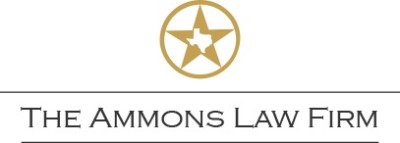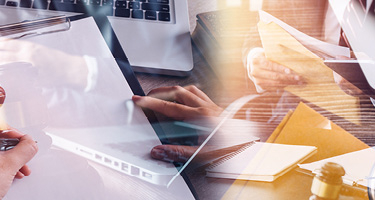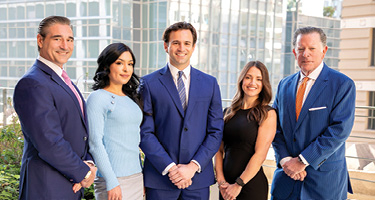The Critical Nature of Evidence in Rollover Cases
Evidence collection in rollover investigations serves multiple purposes beyond establishing how an accident occurred. Physical evidence helps determine why injuries reached certain severity levels and whether vehicle safety systems functioned as designed during the crash sequence.
Rollover dynamics involve intricate mechanical processes: the initial tripping mechanism, progressive roof deformation patterns, restraint system loading, and occupant movement throughout the rotation phases. Each element requires careful documentation and analysis.
Liability questions may extend beyond driver error to include vehicle design and manufacturing considerations. Roof strength specifications, airbag deployment algorithms, and seat belt performance during rotation events all become relevant when safety systems fail to protect occupants adequately.
A Rollover Accident Lawyer can help coordinate the preservation of crucial evidence before it becomes unavailable. Time-sensitive factors include vehicle disposal schedules, weather effects on crash scenes, and data storage limitations in electronic systems.
Vehicle Preservation: Foundation of Technical Analysis
The crashed vehicle often contains the most valuable evidence in rollover cases. Once vehicles undergo repair, salvage, or disposal, opportunities to measure deformation patterns, analyze component failures, and document system performance disappear permanently.
Technical inspections typically focus on roof crush measurements, restraint system loading evidence, door latch integrity, and airbag deployment patterns. These examinations require coordination between legal teams and engineering consultants to ensure comprehensive documentation.
When safety system malfunctions appear likely, component-specific investigations become necessary. Restraint system failures may warrant examination by attorneys experienced with Seat Belt Failure Lawsuit matters. Similarly, airbag non-deployment or improper deployment scenarios may require consultation with legal professionals familiar with Defective Airbag Lawsuits.
Vehicle preservation involves secure storage, controlled access protocols, and detailed photographic documentation before any inspections begin. Chain of custody procedures ensure evidence admissibility in potential legal proceedings.
Crash Scene Documentation and Physical Evidence
Crash scenes provide crucial context for understanding rollover mechanics, but physical evidence deteriorates rapidly. Tire marks, gouges in pavement or soil, debris patterns, and final vehicle positions help reconstruct the sequence of events leading to and during the rollover.
Environmental factors can quickly compromise scene evidence. Weather conditions, traffic flow, and cleanup activities may alter or eliminate important physical markers within hours of an accident.
Professional scene documentation includes comprehensive photography, precise measurements of evidence locations, and detailed sketches showing relationships between various elements. Witness identification and statement collection often prove time-sensitive as well.
For cases involving multiple vehicles, police reports and traffic reconstruction files provide additional context. A Car Accident Attorney may utilize these official records alongside independent scene documentation to develop a complete understanding of causation factors.
Electronic Data Recovery and Analysis
Modern vehicles contain sophisticated data recording systems that capture operational parameters before, during, and after crash events. These electronic records provide objective measurements of vehicle speed, braking application, steering inputs, and restraint system status during critical timeframes.
Event data recorders, commonly known as "black boxes," store information that can distinguish between driver actions and mechanical failures. This data becomes particularly valuable when establishing whether a rollover resulted from driver error, road conditions, or vehicle defects.
Data preservation requires prompt action since some systems have limited storage capacity and may overwrite information during subsequent vehicle operation. Legal procedures may be necessary to prevent data destruction or unauthorized access.
Commercial vehicles subject to federal regulations maintain additional electronic records including hours of service logs, maintenance records, and fleet management data. Truck Accident Attorneys often coordinate preservation of both vehicle-specific and fleet-wide electronic records in commercial rollover cases.
Medical Evidence Integration
Establishing connections between crash dynamics and specific injuries requires careful correlation of medical records with physical evidence. Medical documentation must be analyzed alongside vehicle damage patterns to understand how crash forces translated into particular injury mechanisms.
Roof crush measurements may correlate with spinal compression injuries, while ejection evidence might explain traumatic brain injuries or multiple trauma patterns. Medical imaging, surgical reports, and ongoing treatment records all contribute to understanding injury causation and long-term consequences.
Complex injury cases often require consultation with attorneys experienced in handling specific injury types. Spinal injuries may benefit from legal professionals familiar with Spinal Cord Injury Lawyers cases. Brain injuries might require consultation with Brain Injury Attorneys who understand the long-term implications of cognitive impairments.
Medical-legal collaboration helps establish not only immediate medical costs but also future care needs, rehabilitation requirements, and lost earning capacity related to permanent impairments.
Legal Coordination of Evidence Preservation
Effective evidence preservation requires coordinated legal action to prevent spoliation and ensure all parties have appropriate access to critical materials. Preservation notices, inspection protocols, and chain of custody procedures must be established quickly after rollover incidents.
Insurance companies and manufacturers often have their own investigation teams and evidence collection procedures. Legal representation helps ensure that injured parties maintain equal access to evidence and participate meaningfully in joint inspections and testing procedures.
Without proper legal coordination, families may find themselves disadvantaged when crucial evidence becomes unavailable or when other parties control access to important materials. Early involvement of Personal Injury Attorneys helps protect the rights of injured parties throughout the investigation process.
Professional Legal Assistance
Evidence preservation in rollover accidents requires immediate action and technical coordination. Vehicle security, scene documentation, electronic data recovery, and medical record integration all demand prompt attention to prevent evidence loss.
The Ammons Law Firm has experience coordinating complex rollover investigations and working with families affected by serious crashes. Our attorneys understand the technical aspects of evidence preservation and the importance of thorough investigation in these cases.
If you or a family member has been involved in a rollover accident, consultation with Rollover Accident Lawyers may help ensure that important evidence is preserved and your legal rights are protected. Personal Injury Lawyers can provide guidance on investigation procedures and help families understand their options during difficult circumstances.
This content provides general information only and does not constitute legal advice. No attorney-client relationship is created by reading this material. Laws vary by jurisdiction, and individual circumstances affect legal outcomes. Consult with a qualified attorney licensed in your state for advice regarding your specific situation.















